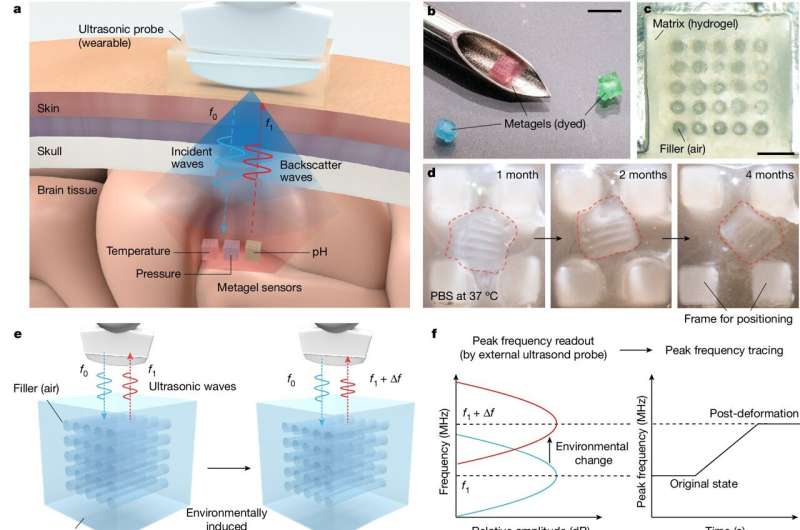June 6, 2024 report
This article has been reviewed according to Science X's editorial process and policies. Editors have highlighted the following attributes while ensuring the content's credibility:
fact-checked
peer-reviewed publication
trusted source
proofread
Smart hydrogel injected into intracranial fluid can measure changes in temperature, pH or pressure

A team of medical researchers at Huazhong University of Science and Technology, in China, working with a colleague from Nanyang Technological University, in Singapore, has developed a noninvasive way to monitor biomarkers implanted in the skull over a period of several weeks.
In their study, published in the journal Nature, the group developed a smart hydrogel that could be injected into intracranial fluid inside the skull as a means of measuring changes in temperature, pH or pressure.
Jules Magda, with the University of Utah, has published a News & Views piece in the same journal issue outlining the work done by the team.
Prior research has shown that a hindrance to the development of sensor implants is the buildup of a fibrous shell around the sensor, preventing it from communicating. Prior research has also shown that the buildup of the shell is due to the immune system's response to a hard foreign object inside the body. In this new study, the research team found a way to overcome this problem by developing a soft sensor.
The sensor consists of a hydrogel pressed into the shape of a 2 x 2-millimeter cube—inside the cube are multiple columns made of a different hydrogel stacked together. The columns were designed to shrink or swell depending on conditions in the fluid in which they are immersed. The cubes were designed to dissolve after a few weeks.
The team tested their sensor by injecting several of them into the intracranial fluid of test rats and pigs. The animals were then monitored using a standard ultrasound device—the same type used to create ultrasound images of babies still in the womb. In this instance, changes in ultrasound signals reflected off the hydrogel columns inside the cubes, just inside the skull, could be used to calculate changes in fluid temperature, pressure, and pH levels.
During testing, the sensor worked as desired for approximately five weeks before it dissolved. The team also found that injection of the sensor, which did not require surgery, did not appear to have any negative impacts on the test animals.
More information: Hanchuan Tang et al, Injectable ultrasonic sensor for wireless monitoring of intracranial signals, Nature (2024). DOI: 10.1038/s41586-024-07334-y
Jules J. Magda, Brain fluid probed by ultrasound using squishy cubes, Nature (2024). DOI: 10.1038/d41586-024-01423-8
© 2024 Science X Network


















